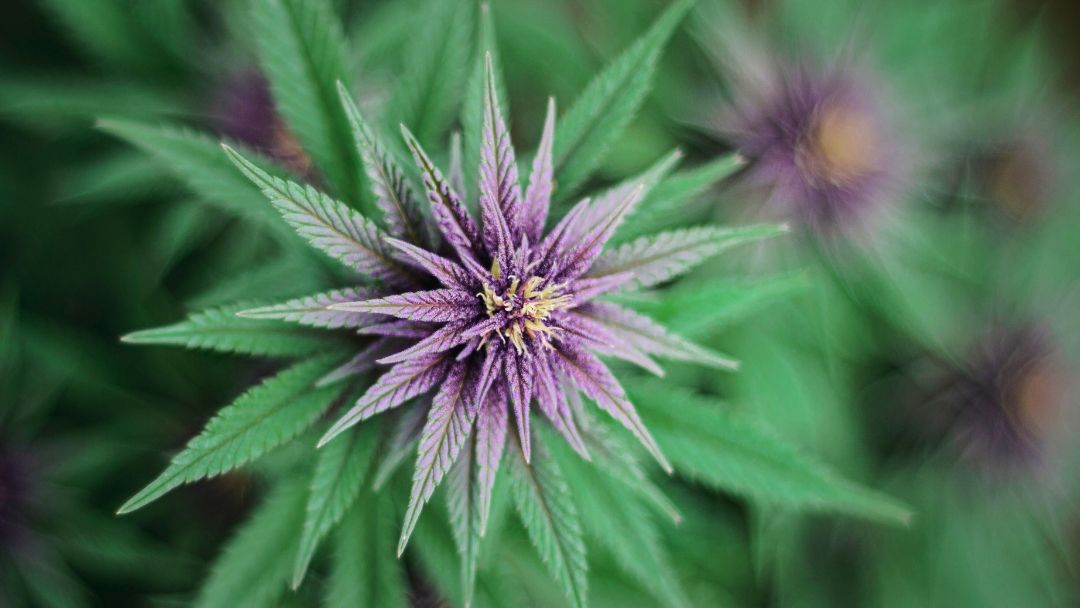Why Minor Cannabis Compounds Are Getting Sleep Attention
Sleep troubles are all too common—stress, erratic routines, and various health issues can derail restful nights, leaving people searching for solutions beyond traditional sleep aids. As natural health trends evolve and cannabis research grows, attention is shifting from well-known cannabinoids like CBD (cannabidiol) and THC (tetrahydrocannabinol), to lesser-known ones such as CBN (cannabinol).
CBN, often called the “sleep cannabinoid,” is appearing in more wellness products, especially those blended with THC. Many people who’ve tried them say the combination leaves them feeling more relaxed at bedtime and helps them stay asleep longer.
CBN, often called the “sleep cannabinoid,” is appearing in more wellness products, especially those blended with THC. Many people who’ve tried them say the combination leaves them feeling more relaxed at bedtime and helps them stay asleep longer.
CBN at a Glance
CBN forms when THC ages and oxidizes, giving it distinct effects from its psychoactive parent compound. It’s slightly intoxicating, if at all, and appears to interact with the body differently than CBD.

The Ontario Cannabis Store describes CBN as a minor cannabinoid often featured in products marketed for nighttime use. These include gummies, softgels, and oils that pair CBN with THC — sometimes in low doses to encourage rest without overwhelming psychoactive effects. The growing variety of CBN-infused products makes it easier for consumers to experiment with different formats and ratios to find what works best for them.
Why Pair CBN with THC?
THC has a more established link to helping people fall asleep quickly, but it can also reduce REM sleep and alter normal sleep cycles. Some experts believe combining THC with CBN could balance these effects — THC helping with sleep onset, while CBN might extend total sleep time or improve sleep continuity.
This idea aligns with the “entourage effect,” where cannabinoids work together to produce a more noticeable impact. Anecdotally, people report feeling a deeper, more sustained rest when the two are taken together — often waking less during the night and feeling more refreshed in the morning.
This idea aligns with the “entourage effect,” where cannabinoids work together to produce a more noticeable impact. Anecdotally, people report feeling a deeper, more sustained rest when the two are taken together — often waking less during the night and feeling more refreshed in the morning.
What the Science and Experience Tell Us
According to the Sleep Foundation, animal studies have shown that CBN combined with THC produced stronger sedative effects than THC alone, suggesting the two may enhance each other’s impact.

While these findings can’t be directly applied to humans without further testing, they help explain why many people report a more restful night when using both cannabinoids together.
Feedback from cannabis users supports this: people who find CBD too mild or THC too short-lived often describe THC–CBN blends as a “gentle unwind” that helps them drift off naturally. Others value the lack of next-day grogginess compared to some over-the-counter sleep aids.
The American Psychological Association notes that individual differences — such as metabolism, prior cannabis use, and the delivery method — can significantly affect how well someone responds. This means personal trial and observation are often key to finding the right fit.
Feedback from cannabis users supports this: people who find CBD too mild or THC too short-lived often describe THC–CBN blends as a “gentle unwind” that helps them drift off naturally. Others value the lack of next-day grogginess compared to some over-the-counter sleep aids.
The American Psychological Association notes that individual differences — such as metabolism, prior cannabis use, and the delivery method — can significantly affect how well someone responds. This means personal trial and observation are often key to finding the right fit.
Side Effects and Safety
THC can cause grogginess, impaired coordination, anxiety, or memory issues in some users, especially at higher doses. Long-term or frequent use may also affect sleep quality over time.
CBN appears to have a mild side-effect profile, but research is limited. Both THC and CBN can interact with medications, particularly sedatives, and their effects may be stronger in older adults or those with certain health conditions. If you’re considering a THC–CBN product, start with a low dose and check with a healthcare provider — especially if you take other medications.
CBN appears to have a mild side-effect profile, but research is limited. Both THC and CBN can interact with medications, particularly sedatives, and their effects may be stronger in older adults or those with certain health conditions. If you’re considering a THC–CBN product, start with a low dose and check with a healthcare provider — especially if you take other medications.

Making It Practical
Think of THC as the “lights-out” switch and CBN as the “stay asleep” lock. Together, they may help some people both fall asleep and maintain that rest.
The OCS offers CBN in multiple formats — oils for slow, steady release; gummies for a convenient pre-bed snack; and softgels for odour-free consistent dosing. Oils and edibles typically last longer in the body, which may suit overnight use, while inhaled forms act faster but wear off more quickly. Choosing the right format depends on your specific sleep challenges—like needing help to fall asleep versus stay asleep.
The OCS offers CBN in multiple formats — oils for slow, steady release; gummies for a convenient pre-bed snack; and softgels for odour-free consistent dosing. Oils and edibles typically last longer in the body, which may suit overnight use, while inhaled forms act faster but wear off more quickly. Choosing the right format depends on your specific sleep challenges—like needing help to fall asleep versus stay asleep.
Bottom Line
THC + CBN is an intriguing sleep-support combo with growing user enthusiasm and preliminary evidence hinting at synergistic effects. While more clinical research is needed, product availability and anecdotal reports offer a hopeful glimpse into its potential.
If you decide to explore these blends, remember to start small, observe your response carefully, and consult a knowledgeable healthcare provider. With thoughtful use, THC + CBN may be a gentle but effective nudge toward restorative rest.
If you decide to explore these blends, remember to start small, observe your response carefully, and consult a knowledgeable healthcare provider. With thoughtful use, THC + CBN may be a gentle but effective nudge toward restorative rest.

Quick Shopper’s Guide to Cannabis Sleep Products
Disclaimer: Onset times and durations for cannabis products can vary widely. Factors influencing these ranges include individual physiology, method of consumption, specific product formulation, metabolism, tolerance, body weight, and even what you’ve eaten that day. Your experience may differ from reported averages.
1. Oils & Tinctures
- Onset: 15–45 minutes
- Duration: 4–8 hours
- Best for: Those wanting slow, steady effects through the night.
- Tip: Start with a small dose 1–2 hours before bed.
2. Gummies & Edibles
- Onset: 30–120 minutes (up to 4 hours to feel peak effects)
- Duration: 6–12 hours, some residual effects can last up to 24 hours
- Best for: Convenience and longer-lasting effects.
- Tip: Keep timing consistent each night to help your body adjust.
3. Softgels & Capsules
- Onset: 30–60 minutes
- Duration: 4–8 hours
- Best for: Precise, consistent dosing without taste or smell.
- Tip: Pair with a light snack for better absorption.
4. Inhaled Forms (Vapes, Pre-Rolls)
- Onset: Within minutes (peak effects within 15-30 minutes)
- Duration: 2–4 hours, some residual effects can last longer
- Best for: Those needing fast relief to fall asleep.
- Tip: May wear off before morning — better for people whose main issue is sleep onset, not staying asleep.

Final Pointers
- Inhaled forms deliver fast effects—great if you need help falling asleep—but may not last all night.
- Edibles and softgels offer slow, steady absorption—ideal for overnight relief, but be patient with onset.
- Oils/tinctures strike a balance, especially if taken sublingually; they can be reliable and easier to dose.
Sources
1. “Cannabis Edibles: Safe Use Fact Sheet.” Government of British Columbia, www2.gov.bc.ca/assets/gov/public-safety-and-emergency-services/public-safety/csu/cannabis-edibles-safe-use-fact-sheet.pdf.
Accessed 2 July 2025.
2. “Cannabis Tinctures vs. Oils: What’s the Difference?” Green Goods, https://visitgreengoods.com/learn/cannabis-tinctures-vs-oils.
Accessed 3 July 2025.
3. “CBN for Sleep: What You Should Know.” Sleep Foundation, https://www.sleepfoundation.org/sleep-aids/cbn-for-sleep.
Accessed 3 July 2025.
4. “CBN vs THC: How These Cannabinoids Work Together.” Natural Ways CBD, https://www.naturalwayscbd.com/blog/cbn-and-thc-together.
Accessed 4 July 2025.
5. “CBN, CBD, THC: Do These Cannabinoids Help You Sleep?” New York Magazine, 6 June 2023, https://nymag.com/strategist/article/is-cbn-cbd-thc-good-for-sleep.html.
Accessed 4 July 2025.
6. “Effects of Cannabinol and Tetrahydrocannabinol on Sleep in Rodents and Humans.” Neuropsychopharmacology, vol. 49, 2024, https://www.nature.com/articles/s41386-024-02018-7.
Accessed 8 July 2025.
7. “Minor Cannabinoids: CBN, CBG, CBC, and THCV.” Ontario Cannabis Store, https://ocs.ca/blogs/cannabis-basics/what-are-minor-cannabinoids-cbn-cbg-cbc-thcv.
Accessed 8 July 2025.
8. “Onset and Duration.” Washington State Liquor and Cannabis Board, https://lcb.wa.gov/education2cs/onset_and_duration.
Accessed 9 July 2025.
9. “Onset and Duration of Cannabis Effects.” Periodic Edibles, https://www.periodicedibles.com/blog/onset-and-duration.
Accessed 10 July 2025.
10. “PsycNET Record Display.” American Psychological Association, https://psycnet.apa.org/fulltext/2024-14146-001.html.10.
Accessed 10 July 2025.
